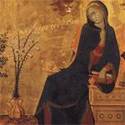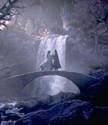
About the Catholica
Previous Posts
Toscana and the Refuges of LightThe Anti-Narnia
Ballad of the White Horse
Red and Black (at the OCP Cafe)
Dvorâk
Polyphonic Bliss
Best. Motet. Ever.
Syndication

News
Seattle CatholicCatholic Exchange
Crunchy Catholicism
Being CatholicCaelum Et Terra
Mystical Rose Herbals
Mary Gardens
Tridentine Tiramisú

St-Martin de Bréthencourt
Chartres Pilgrimage
(muchas fotos!)
Campos Photos
LMSEW Photos
Catholic Artists Today

Official Passion Site
Smallpax Guild
Nicholas Wilton Music
StudiObrien
Via Rosa Rosaries
Regina Doman
Poetry of Pavel Chichikov
Free Literature On the Web

Project Gutenberg
G.K. Chesterton
On Nothing
On Something
First and Last
Europe and the Faith
Belloc - Poetry
More Belloc Poetry
John Henry Newman
Christopher Dawson
Frederico GarcÃa Lorca
Tolkien

Romantic &
Imaginative Theology
Council of Elrond
Anke Eissmann's Art
Angels and Elves
Christianity and Middle Earth
Coulombe Essays
Ardalambion
Gwaith i Pheddain
Arthrand Board
Crazy-Go-Nuts
Homestar RunnerStrindberg & Helium
SuperPope Anime
The Onion Dome
Blogs I Like

Alle Psalite
Andrew Cusack
Angry Twins
Cacciaguida
Church of the Masses
Curt Jester
Dappled Things
Devout Life
Dignare Me Laudare Te
Erik's Rants & Recipes
Flos Carmeli
Give Tongue
Hallowed Ground
The Idyllist
Inn at the End of the World
Jade's Trick
Jelly-Pinched Theatre
Old Oligarch
Open Book
Orthonormal Basis
Sancta Sanctis
Secret Agent Man
Shrine of the Holy Whapping
Video Meliora
Vivid
The Western Confucian
Zadok the Roman
Christendom Blogs
Charlemagne's PalaceThe Christendom Commons
Meet Virginia
Destination: Order
Enchiridion
Fiddleback Fever
JulesArts
Midnight Radio
Nota Bene
¿Qué?
somewhatlost
This Red Rock
West of the Moon
Vestal Morons
Zucchero
<< # St. Blog's Parish ? >>

Archives
- April 2004
- May 2004
- June 2004
- July 2004
- August 2004
- September 2004
- October 2004
- November 2004
- December 2004
- January 2005
- February 2005
- March 2005
- April 2005
- May 2005
- June 2005
- July 2005
- August 2005
- September 2005
- October 2005
- November 2005
- December 2005
- January 2006
- February 2006
- March 2006
- April 2006
- May 2006
- June 2006
- August 2006
- September 2006
- January 2007
- February 2007
- July 2007
Kiss me, I'm Catholic.
Sunday, July 03, 2005
A Tale of Two Portraits
One of the coolest things I saw in New York was the Frick Collection. It's a small and intimate museum, and it displayed works by almost all of my favorite artists: Vermeer, El Greco, Velasquez... My favorite work was Holbein's portrait of St. Thomas More. It was displayed in an interesting way: it was hanging to the left of a large fireplace, and on the other side was Holbein's portrait of Thomas Cromwell - the man who destroyed the monasteries and took over Thomas More's position when he resigned.


It was almost like the two of them were looking at each other. The colors and details were so much clearer than in these images - there is nothing like seeing the original of an artwork! The brown-looking cord behind Thomas More is actually a deep scarlet. His velvet sleeves look almost like real velvet. And his face...
Holbein wasn't intending to produce an icon when he made this potrait. But I felt as though I were looking at one. As I stood in front of it, I thought: Holbein was looking into Thomas More's face, into his eyes, nearly five hundred years ago. He was painting just what he saw. It's like I'm seeing Thomas More's reflection. So I just looked and looked for the longest time. His eyes were incredibly steadfast. His mouth was serious, but it was impossible to resist the vision of a smile flashing over his face. You could imagine him relaxing from that carefully aranged pose, laughing and coming over to see what Holbein had created. Holbein really caught something of his character, as described by Erasmus in a wonderful letter:
I just love St. Thomas More.
|


It was almost like the two of them were looking at each other. The colors and details were so much clearer than in these images - there is nothing like seeing the original of an artwork! The brown-looking cord behind Thomas More is actually a deep scarlet. His velvet sleeves look almost like real velvet. And his face...
Holbein wasn't intending to produce an icon when he made this potrait. But I felt as though I were looking at one. As I stood in front of it, I thought: Holbein was looking into Thomas More's face, into his eyes, nearly five hundred years ago. He was painting just what he saw. It's like I'm seeing Thomas More's reflection. So I just looked and looked for the longest time. His eyes were incredibly steadfast. His mouth was serious, but it was impossible to resist the vision of a smile flashing over his face. You could imagine him relaxing from that carefully aranged pose, laughing and coming over to see what Holbein had created. Holbein really caught something of his character, as described by Erasmus in a wonderful letter:
His countenance is in harmony with his character, being always expressive of an amiable joyousness, and even an incipient laughter and, to speak candidly, it is better framed for gladness than for gravity or dignity, though without any approach to folly or buffoonery.... In human affairs there is nothing from which he does not extract enjoyment, even from things that are most serious. If he converses with the learned and judicious, he delights in their talent, if with the ignorant and foolish, he enjoys their stupidity. He is not even offended by professional jesters. With a wonderful dexterity he accommodates himself to every disposition. As a rule, in talking with women, even with his own wife, he is full of jokes and banter. No one is less led by the opinions of the crowd, yet no one departs less from common sense.
I just love St. Thomas More.

